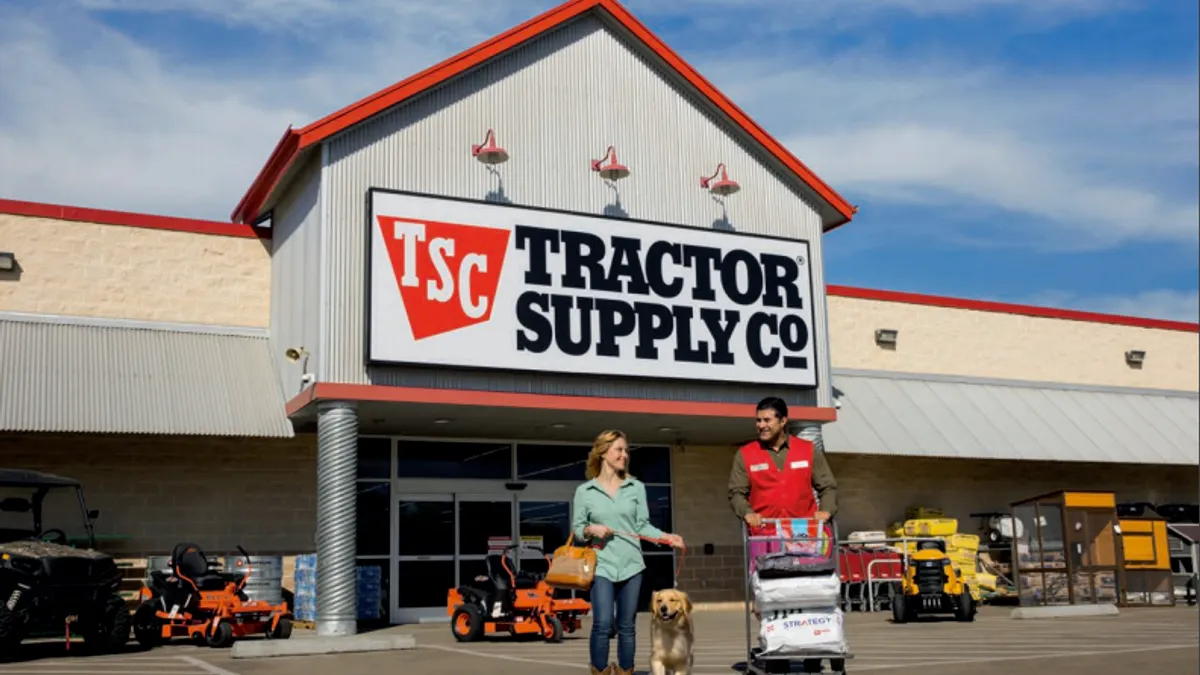Dive Brief:
- On its Q2 earnings call, Tractor Supply Co. reported over 70% of online orders are now fulfilled in-store, which executives called an encouraging sign as the company invests in its brick-and-mortar properties and digital presence to increase market share in rural communities.
- According to Steve Barbarick, president and CEO of Tractor Supply, the retailer has over 100,000 SKUs on its website. On the Q2 earnings call, he said that thanks to their in-store fulfillment and BOPIS strategies, the brand "experienced strength in product lines such as pet food and supplies, animal feed, live goods, grass seed and forge to name a few ... products that drive repeat traffic to our stores."
- In 2018, the retailer opened 80 new stores and net sales increased by 9%. This year, company executives said they are working to better use customer data to drive increased in-store traffic and sales across their expanding retail footprint. For example, Tractor Supply used machine-learning targeted video campaigns to advertise brands that would be featured in the company's spring lineup. They received 8 million views that were directly linked to over 300,000 customer visits.
Dive Insight:
Tractor Supply's rural customer base and distribution network makes it a prime candidate for leveraging a buy online, pickup in-store (BOPIS) strategy. Its target demographic tends to purchase equipment and heavier items, like feed, in bulk trips as opposed to buying on demand.
The BOPIS strategy has also served the retailer's customer base well as many buyers in rural communities may not have easy access to fast and affordable last-mile delivery options. As a result, the connection between the company's digital and physical storefronts has allowed Tractor Supply to leverage an in-store fulfillment model that saves on supply chain costs while boosting overall sales.
Some retailers see BOPIS as a way to compete with Amazon. Rural residents, depending on where they live, don't always have the ability to take advantage of free one- and two-day shipping because carriers, including the U.S. Postal Service, have to travel longer distances compared to denser urban and suburban areas. As a result, for more out-of-the-way consumers, frequently purchasing items online and having them delivered to their homes can be prohibitively expensive or simply take more time than driving to the store. For this reason, BOPIS is catching on among rural retailers. In rural Alaska, for example, where Amazon doesn't always offer Prime shipping local stores are looking to offer more value to busy customers.
Similarly, Dollar General, one of the largest rural retailers in the U.S., is leveraging its footprint in these areas to offer FedEx parcel pick-up and drop-off. Before the partnership, set to roll out this year, "55% of people living in rural communities lived within 5 miles of a FedEx hold location," Rae Lyn Rushing, senior communications specialist at FedEx, told Supply Chain Dive via email. Now, the company estimates "90 percent of Americans will ultimately live within five miles of a FedEx hold retail location," a win-win for both companies as Dollar General anticipates more foot-traffic in its stores and FedEx gains greater access to rural customers without having to build extended last-mile delivery networks to reach them.









